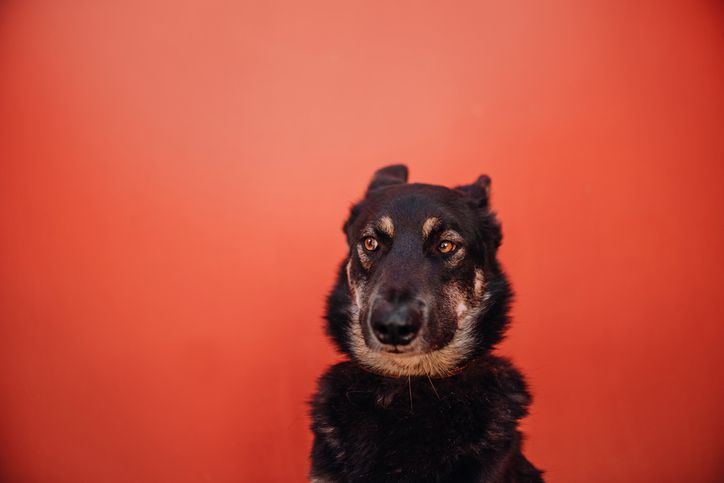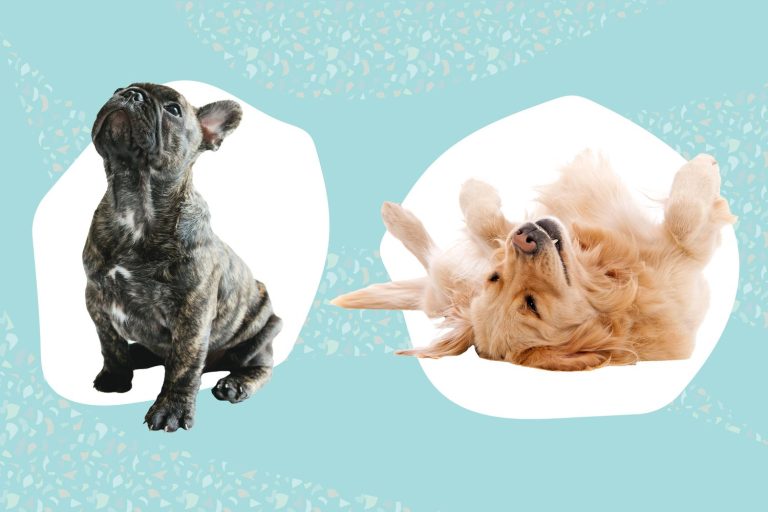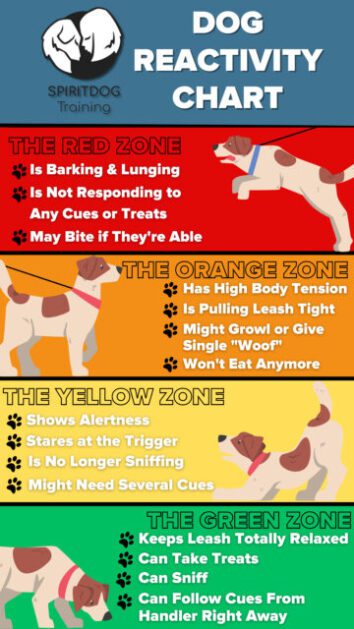
Training a reactive dog is possible through consistent and frequent positive reinforcement training where the dog associates the trigger with something positive, such as treats, toys, and praise. With time and patience, the dog can learn to look to its owner for guidance and overcome reactive behavior.
Using techniques like counter-conditioning and setting up a routine can effectively manage and improve reactive behavior in dogs. It’s important to remember that while many reactive dogs can improve with training, some fear-based behaviors may never completely disappear.
However, with dedicated training and work, significant progress can be made in helping reactive dogs become calmer and better behaved.
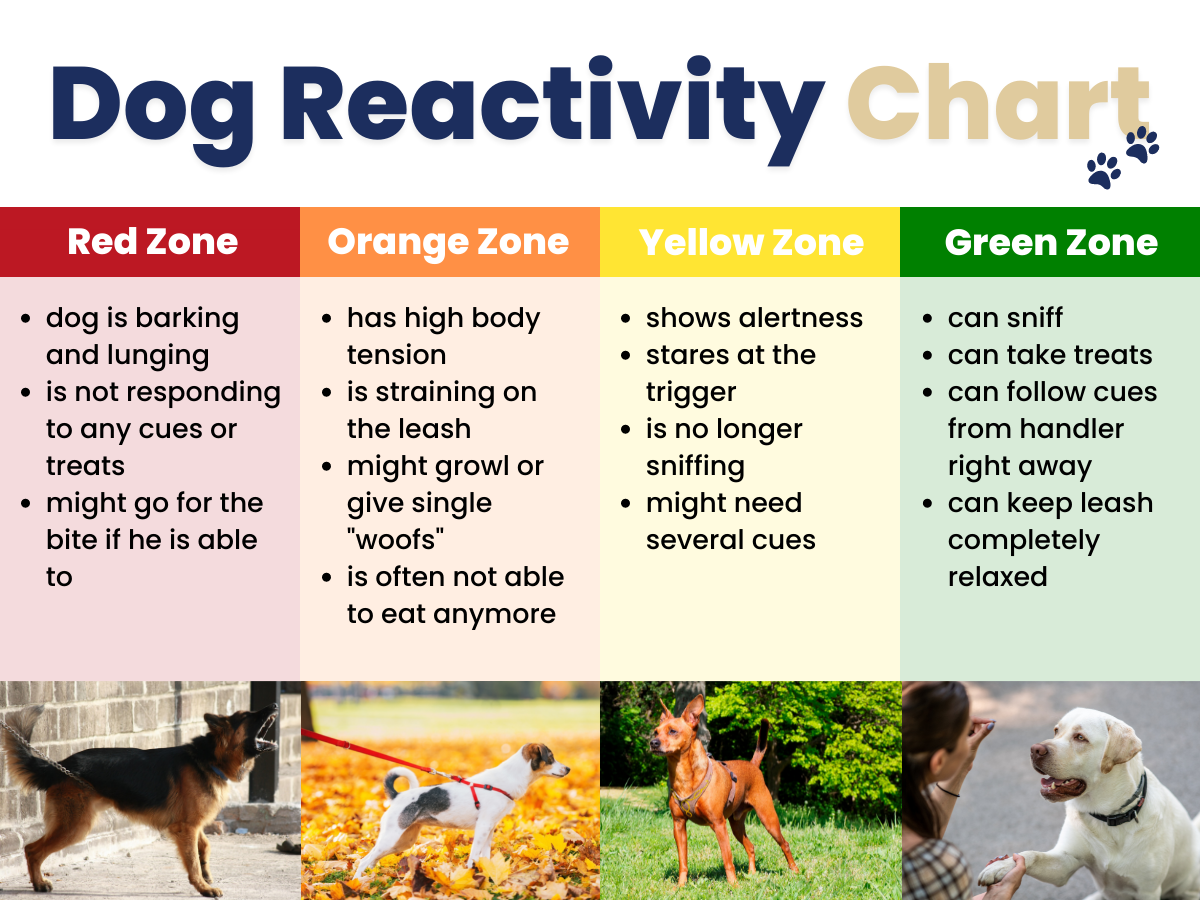
Understanding Reactivity In Dogs
With consistent and frequent training, reactive dogs can be trained to associate triggers with something positive, decreasing reactive behavior. Positive reinforcement through treats, toys, and praise can reinforce desired behaviors. Over time, dogs can learn to move closer to scary stimuli and look to their humans for guidance.
What Is Reactivity?
Reactivity in dogs refers to an exaggerated or overreactive response to certain stimuli. It can manifest as barking, lunging, growling, or even aggressive behavior towards people, other dogs, or environmental triggers.
Common Triggers For Reactive Dogs
Reactive dogs may have different triggers that set off their reactive behavior. Some common triggers include:
- Other dogs
- Strangers
- Loud noises
- Certain smells
Managing Reactive Behavior
While curing reactivity ultimately may not be possible in every case, consistent training and management can significantly improve your dog’s behavior. Here are some strategies to help manage reactive behavior:
- Counter conditioning: Gradually exposing your dog to the trigger at a safe distance while rewarding calm behavior can help change their association from fear or aggression to a positive response.
- Create a routine: Dogs thrive on routine, so establishing a consistent daily routine can help reduce anxiety and stress.
- Sign up for a behavior rehab class: Working with a professional dog behavior specialist can provide specialized training and guidance to address reactive behavior.
- Body language: Understanding and being aware of your dog’s body language can help you anticipate and redirect reactive behavior before it escalates.
- Make household changes: Creating a calm and structured environment at home, such as providing a designated safe space for your dog, can help reduce overall stress levels.
- Use essential equipment: Use tools such as a head halter or front-clip harness to control your dog during walks.
Remember, managing reactive behavior requires patience, consistency, and understanding. With proper training and management techniques, you can help your reactive dog become more comfortable and confident in various situations.
Can a reactive dog be trained?
Yes, with consistent and frequent training, reactive dogs can associate triggers with positive experiences. Positive reinforcement techniques, such as treats, toys, and praise, can reward calm behavior and redirect focus. Over time, as your dog becomes more comfortable, you can gradually decrease the distance from the trigger and reinforce positive behavior.

Training Techniques For Reactive Dogs
Training a reactive dog can be a challenging but rewarding experience. Reactive dogs display an exaggerated response to stimuli such as other dogs, strangers, or loud noises. It is essential to use adequate training techniques to help manage and modify their reactive behavior. This section will explore three critical training techniques for reactive dogs: counter-conditioning, reward-based training methods, and working with a dog behavior specialist.
Counter Conditioning
Counterconditioning is a highly effective training technique for reactive dogs. It involves changing their emotional response to the trigger by creating positive associations. Here’s how it works:
- Identify the trigger that elicits the reactive behavior, such as seeing another dog.
- Start at a distance where your dog remains calm, and reward them with a high-value treat or toy.
- Gradually decrease the distance between your dog and the trigger, continuing to reward them for their calm behavior.
- Repeat this process over multiple training sessions, gradually exposing your dog to closer proximity to the trigger while maintaining their positive association.
Reward-based Training Methods
Reward-based training methods are an excellent approach for training reactive dogs. These methods rely on positive reinforcement to reinforce desired behaviors and discourage reactive behaviors. Here’s how you can implement reward-based training methods:
- Identify the behaviors you want to encourage, such as calmness or focusing on you instead of the trigger.
- Choose high-value rewards, such as treats or toys, that your dog finds highly motivating.
- Reinforce the desired behaviors by rewarding your dog immediately after they exhibit them.
- Consistently reinforce these behaviors in different environments and gradually increase the difficulty level.
- Avoid punishment or negative reinforcement, as it can exacerbate reactive behavior and diminish trust between you and your dog.
Working With A Dog Behavior Specialist
When dealing with a reactive dog, seeking assistance from a professional dog behavior specialist can be beneficial. These experts have extensive experience working with reactive dogs and can provide valuable guidance. Here’s how working with a dog behavior specialist can help:
- They will thoroughly assess your dog’s behavior and triggers to develop a tailored training plan.
- They can guide you in implementing effective training techniques and provide ongoing support.
- They may suggest additional strategies specific to your dog’s needs, such as desensitization exercises or behavior modification techniques.
- Working with a dog behavior specialist helps ensure that you receive expert guidance and increases your chances of effectively managing and modifying your dog’s reactive behavior.
You can make significant progress in training a reactive dog by implementing counterconditioning and reward-based training methods and seeking assistance from a dog behavior specialist. Consistency, patience, and positive reinforcement are key to helping your dog overcome their reactive behavior and lead a happier, more balanced life. Always prioritize your dog’s well-being and consult a professional if needed.
Common Challenges And Solutions
Training a reactive dog can present challenges, but consistent and frequent training, positive reinforcement, and gradual exposure to triggers can manage and improve reactive behavior. Setting up a routine, using counterconditioning techniques, and seeking professional help can also aid in training.
Dealing With Setbacks
Training a reactive dog can be challenging, and setbacks are common. It’s important to remember that progress is not linear, and there may be times when your dog’s reactive behavior resurfaces. When dealing with setbacks, it’s crucial to stay patient and consistent. Here are some strategies to help you navigate through setbacks:
- Reassess the Environment: Take a step back and evaluate the environment where the setback occurred. Identify any potential triggers or stressors that might have contributed to your dog’s reactive behavior.
- Review Training Techniques: Go back to basics and review the training techniques you have been using. Use positive reinforcement, such as treats and praise, to reward desired behaviors and reinforce training.
- Consult a Professional: If you’re facing persistent setbacks, seeking guidance from a professional dog behaviorist or trainer may be beneficial. They can provide personalized advice and help tailor a training plan for your dog’s needs.
Managing Reactive Dogs In Public
Bringing a reactive dog out in public can intimidate the dog and the owner. However, proper management strategies make it possible to navigate public spaces more comfortably. Here are some tips to help you manage your reactive dog in public:
- Leash Management: Always keep your dog on a secure leash to maintain control and prevent potential incidents. Consider using a front-clip harness to give you better control and redirect your dog’s attention when needed.
- Avoid Trigger Situations: Be aware of your dog’s triggers and avoid situations that might provoke their reactive behavior. For example, if your dog is reactive to other dogs, you may walk them during quieter times or in less frequented areas.
- Practice Distracting Techniques: Teach your dog alternative behaviors to redirect their attention when they encounter a trigger. This can include using toys and treats or engaging them in training exercises to shift their focus away from the trigger.
Can Reactive Dogs Be Cured?
While a complete “cure” may not always be possible for reactive dogs, consistent and dedicated training can significantly improve their behavior. Many reactive dogs can learn to manage their reactivity better with time, patience, and the proper techniques. Here are a few considerations:
- Positive Reinforcement: Training should focus on positive reinforcement, rewarding desired behaviors, and creating positive associations with trigger stimuli. This approach helps your dog build confidence and gradually reduce their reactive response.
- No Quick Fix: It’s important to remember that changing reactive behavior takes time. Consistency and repetition are key. Be prepared for setbacks along the way, and continue working on training even after improvements are seen.
- Professional Assistance: If you’re struggling with training or your dog’s reactivity is severe, seeking the help of a professional dog behaviorist or trainer can be invaluable. They have the knowledge and experience to develop a tailored training plan for your dog’s needs.
With dedication and patience, training a reactive dog is possible. By understanding common challenges and implementing practical solutions, you can help your dog overcome their reactive behavior and enjoy a happier, more balanced life.
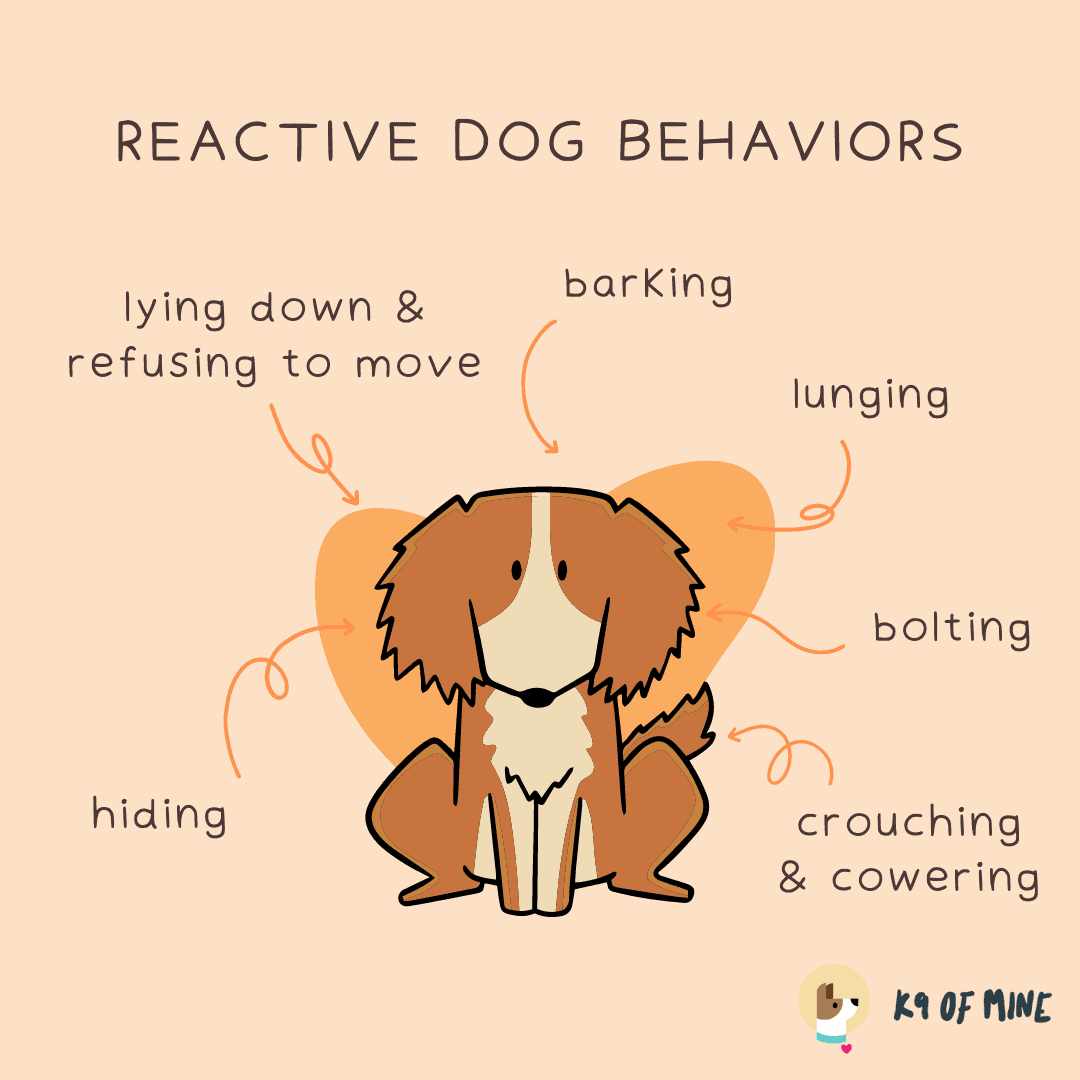
Frequently Asked Questions Of Training A Reactive Dog
Can A Reactive Dog Be Trained?
Yes, a reactive dog can be trained with consistent and frequent training using positive reinforcement such as treats, toys, and praise. Over time, the dog will associate the trigger with something positive and exhibit less reactive behavior. It is essential to manage reactive behavior and seek professional help if needed.
How Do I Stop My Dog From Being Reactive?
To stop your dog from being reactive, follow these steps: 1. Set up a routine and stick to it. 2. Get essential equipment for training. 3. Use counter conditioning to change your dog’s response to triggers. 4. Make household changes to create a calm environment.
5. Understand your dog’s body language. 6. Consider signing up for a behavior rehab class.
Can A Dog Reactive Dog Be Cured?
Yes, a reactive dog can be improved with consistent training and work, but a complete cure may not be possible. Positive reinforcement, such as treats, toys, and praise, can help them associate the trigger with something positive. It’s essential to manage reactive behavior and seek professional help if needed.
How Do You Discipline A Reactive Dog?
To discipline a reactive dog: 1. Stay calm and composed. 2. Block their view or change direction to avoid triggers. 3. Use soothing commands and rewards for calm behavior. 4. Redirect their focus to positive activities with rewards. 5. Consistent training is critical to improving reactivity and preventing aggression.
Conclusion
Consistency and frequent training are essential when training a reactive dog. By associating the trigger with positive experiences and using toys, treats, and praise for reinforcement, your dog can learn to look to you for guidance instead of reacting negatively.
Over time, with patience and practice, you can move closer to the scary stimulus. Remember, reactive behavior can improve with consistent effort but may never disappear. Consider seeking professional help and implementing a routine to support your dog’s progress.

